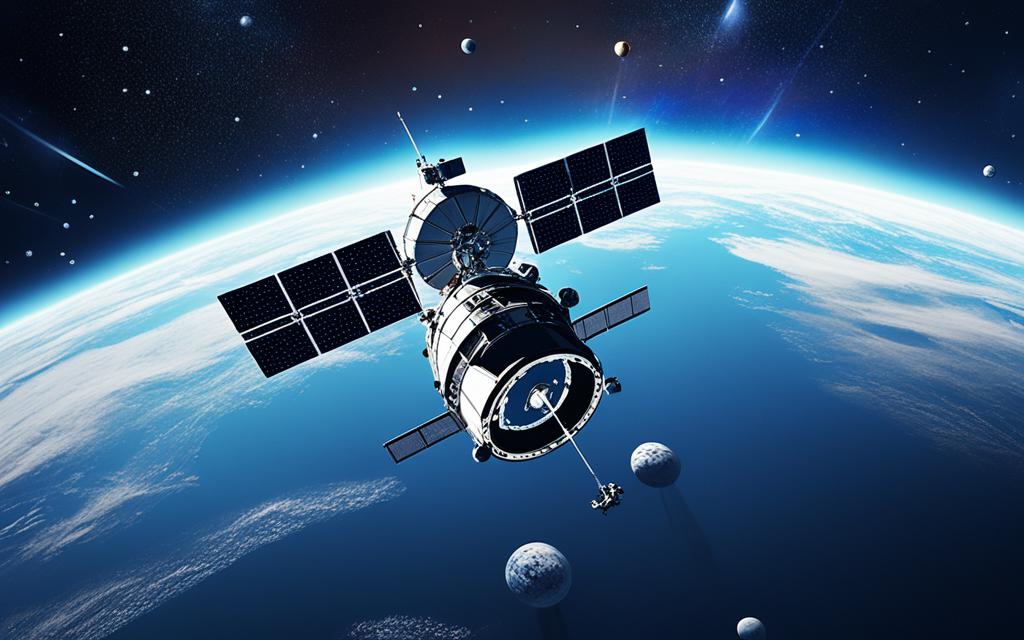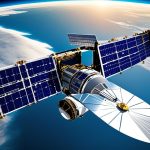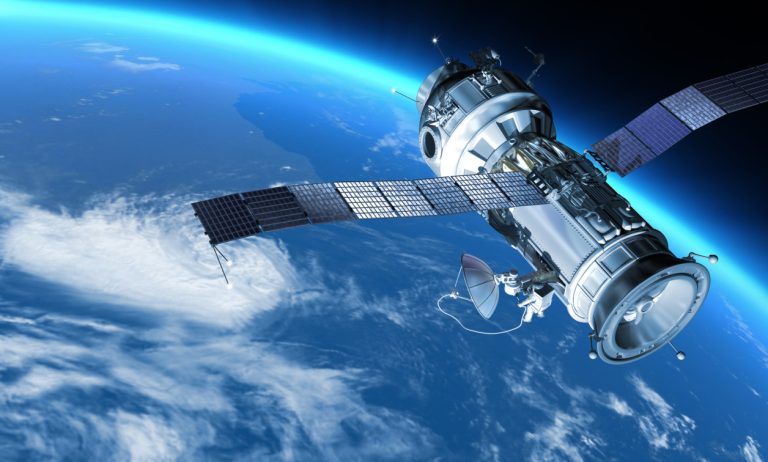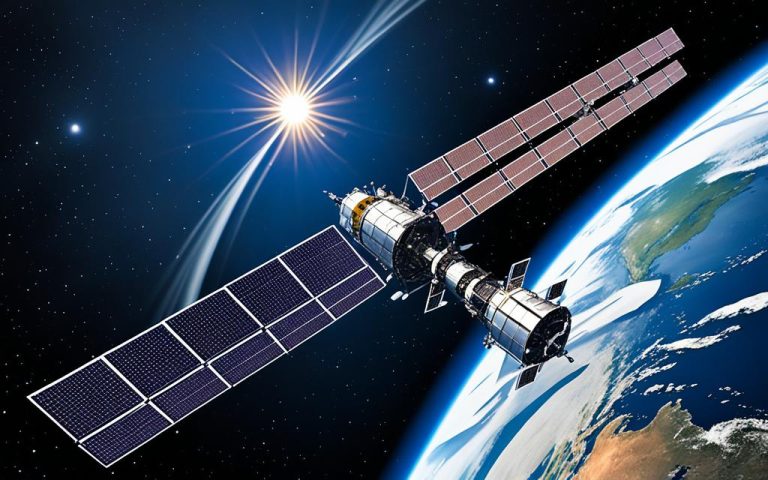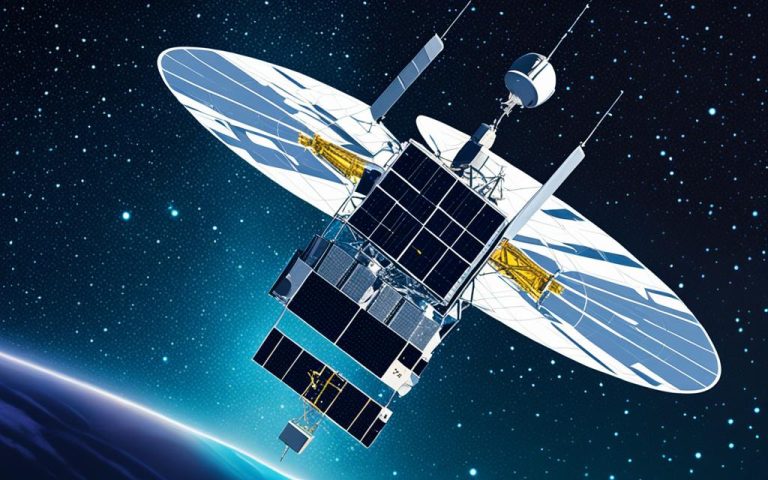High Throughput Satellite (HTS) technologies have revolutionized satellite communications by significantly elevating data rates and enhancing connectivity. As the demand for faster and more reliable data transmission continues to grow, HTS systems offer a game-changing solution.
Viasat, Inc., a leading provider of satellite communication solutions, has recently been selected by the U.S. Army for its Commercial Satellite High-Throughput, Low Latency assessment. This significant endorsement underscores the effectiveness and reliability of HTS technologies for secure and resilient communications.
By deploying Viasat’s High-Throughput Upgrade Kits, the U.S. Army aims to test the terminals in various operational environments, gather valuable feedback, and optimize network design based on real-world scenarios.
The key advantage of HTS systems lies in their ability to deliver high data rates. These technologies utilize advanced features such as multi-frequency band and multi-waveform modems, ensuring flexible connectivity and efficient utilization of available bandwidth.
Furthermore, HTS technologies offer a host of benefits, including extended coverage through multibeam antenna systems, efficient frequency selection, and the capability to operate in the Ka-band.
In the following sections, we will delve deeper into the benefits and applications of HTS technologies, their role in connecting underserved areas, and the future prospects of Very High Throughput Satellites (V/HTS) in the era of 5G.
Stay tuned for a comprehensive exploration of HTS technologies and their transformative impact on satellite communications.
Benefits of High Throughput Satellites (HTS)
High Throughput Satellites (HTS) offer several advantages over conventional communication satellites. These advanced systems provide a significant increase in capacity, allowing for higher data rates and improved performance.
One of the key features of HTS is their ability to utilize frequency reuse and multiple spot beams. This enables them to deliver higher throughput, meaning they can transmit and receive more data compared to traditional satellites.
The increased capacity of HTS systems has a direct impact on the cost per bit. With more data being transmitted within the same allocated orbital spectrum, the cost of transmitting each bit of information decreases. This is a significant benefit for businesses and organizations that rely on satellite communications.
Another important advantage of HTS technology is its ability to provide broadband internet access service in areas where terrestrial infrastructure is limited or unavailable. This is particularly crucial for remote regions, rural communities, and maritime applications.
By leveraging HTS systems, these underserved areas can gain access to high-speed internet connectivity, bridging the digital divide and enabling economic growth and educational opportunities.
In summary, the key benefits of High Throughput Satellites (HTS) include:
- Increased capacity and data rates compared to conventional satellites
- Reduction in cost per bit due to improved spectral efficiency
- Broadband internet access service to underserved areas
Multibeam Antenna Coverage and Frequency Selection
In the realm of High Throughput Satellites (HTS), the use of multibeam antenna coverage plays a crucial role in extending satellite coverage and ensuring improved quality of service. With the ability to cater to geographically dispersed and concentrated earth stations respectively, multibeam antenna coverage opens up new possibilities for satellite communications.
When it comes to selecting the appropriate frequency for HTS operations, the Ka-band takes center stage. Compared to the C/Ku band, the Ka-band offers lower congestion and greater potential for high-speed data transmission. This makes it an ideal choice for HTS systems, allowing for enhanced capacity and improved performance.
Importance of Frequency Selection
The selection of frequency for HTS operations encompasses several factors, including coverage requirements, atmospheric conditions, and the availability of ground equipment technologies. By carefully considering these factors, satellite operators can optimize the performance and reliability of their HTS systems.
“Choosing the right frequency is crucial for ensuring optimum coverage and data rates. The Ka-band provides a less congested frequency spectrum, allowing for efficient data transmission.” – Jacob Anderson, Satellite Communications Expert
Multibeam Antenna Coverage
In the context of HTS, multibeam antenna coverage offers two key advantages. Firstly, it enables extended coverage, ensuring that satellite signals reach even the most remote areas. This makes HTS an ideal solution for providing connectivity to underserved regions that lack terrestrial infrastructure.
Secondly, multibeam antenna coverage enhances the quality of service for concentrated earth stations. By dividing the satellite’s coverage area into multiple smaller beams, each catered to a specific region or group of earth stations, HTS systems can deliver focused and efficient communication links.
| Advantages of Multibeam Antenna Coverage | Examples |
|---|---|
| Extended coverage for remote areas | Providing internet access to rural communities |
| Improved quality of service for concentrated areas | Delivering high-speed connectivity to urban centers |
https://www.youtube.com/watch?v=RY_0LK8K7Hg
By leveraging the power of multibeam antenna coverage and selecting the appropriate frequency band, HTS systems can provide robust and reliable satellite communications. The combination of extended coverage and efficient frequency utilization ensures that HTS technologies continue to shape the future of global connectivity.
High Throughput Satellite Applications
High Throughput Satellite (HTS) technology encompasses a wide range of applications that contribute to global connectivity. With its ability to provide broadband internet access service comparable to terrestrial services, HTS offers a cost-effective solution for bridging the digital divide. Let’s explore some key areas where HTS is making a significant impact:
1. Connectivity for Underserved Areas
One of the primary advantages of HTS technology is its ability to bring connectivity to underserved areas. In regions where terrestrial infrastructure is limited or non-existent, such as remote rural communities or isolated islands, HTS can provide broadband internet access, connecting people to the digital world.
HTS brings enhanced connectivity to underserved areas, helping bridge the digital divide and empower communities with access to vital online resources.
To illustrate the impact of HTS in connecting underserved areas, consider the example of XYZ Village in Northern Canada. Prior to the deployment of HTS, the village had limited internet access, hindering educational opportunities and economic growth. However, with HTS technology in place, XYZ Village now has access to robust and affordable broadband internet, enabling residents to engage in online learning, telemedicine, and e-commerce.
2. Cellular Backhaul Support
In the realm of mobile networks, HTS plays a crucial role in providing cellular backhaul support. The isolated base stations of terrestrial mobile networks, often located in remote or challenging terrains, rely on HTS technology to establish connectivity.
By leveraging HTS for cellular backhaul, mobile network operators enhance their network coverage and extend their services to previously unreachable areas. This ensures that individuals in remote locations have access to reliable and efficient mobile communication infrastructure.
3. Connectivity for Platforms at Sea
Connectivity at sea is another domain where HTS technology proves invaluable. Whether it’s maritime vessels, offshore rigs, or naval platforms, HTS provides high-data-rate connectivity to keep these platforms connected to the world.
High-speed internet access enables efficient communication, data transfer, and remote monitoring for maritime operations. It ensures seamless coordination between vessels, enhances crew welfare, and facilitates real-time decision-making.
4. Military Applications
The military sector benefits significantly from the advanced capabilities of HTS technology. HTS offers increased data rates and enhanced security, critical for military operations and communication networks.
By leveraging HTS, military agencies can establish secure, high-speed connectivity for their troops on the ground and communication between various units. This ensures efficient information exchange, situational awareness, and enables coordinated responses during critical missions.
Table: Comparison of HTS Applications
| Applications | Key Benefits |
|---|---|
| Connectivity for Underserved Areas | – Bridging the digital divide – Empowering communities – Enabling online education and e-commerce |
| Cellular Backhaul Support | – Extending mobile network coverage – Connectivity in remote areas – Reliable communication infrastructure |
| Connectivity for Platforms at Sea | – Efficient maritime operations – Real-time decision making – Enhanced crew welfare |
| Military Applications | – Increased data rates – Enhanced security – Coordinated communication during missions |
Take a look at the following image to visualize the broad applications of HTS technology:

Very High Throughput Satellites (V/HTS) for 5G
The evolution of mobile networks to 5G brings a demand for enhanced mobile broadband (eMBB) communications with higher data rates and lower latency. Very High Throughput Satellites (V/HTS) systems are poised to meet these requirements and revolutionize satellite communications in the 5G era.
V/HTS systems have the capability to support multi-Gbps data rates, offering a significant advancement in mobile broadband connectivity. These systems build upon the existing support provided by satellites for 2G/3G mobile backhaul and aim to achieve an impressive 1 Terabit/s per satellite in the near future.
V/HTS systems employ multibeam coverage, allowing for a greater number of simultaneous connections and improved capacity. By utilizing higher bandwidths in the feeder link, these systems enable high-capacity and low-latency connectivity for 5G networks, ensuring seamless and reliable communication experiences.
With their ability to provide enhanced mobile broadband, V/HTS systems play a vital role in supporting the growing demand for high-speed connectivity in various sectors. From enabling advanced applications in telemedicine and autonomous vehicles to fostering the growth of smart cities, V/HTS systems empower the digital transformation across industries.
Table: Key Features of Very High Throughput Satellites (V/HTS) Systems
| Feature | Description |
|---|---|
| Multi-Gbps Data Rates | Supports ultra-fast data transmission for enhanced mobile broadband in 5G networks. |
| Multibeam Coverage | Enables a larger number of simultaneous connections and improved network capacity. |
| High-Capacity Feeder Links | Utilizes higher bandwidths in the feeder link to provide increased capacity and low latency. |
| Support for Diverse Applications | Empowers various industries, including telemedicine, autonomous vehicles, and smart cities. |
As 5G networks become the backbone of next-generation communication, V/HTS systems emerge as a critical component in meeting the demands for enhanced mobile broadband. These advanced satellite technologies pave the way for seamless connectivity, enabling the realization of innovative applications and the digital transformation of industries.
The Role of Satellites in Connecting Underserved Areas
Satellites play a crucial role in bridging the connectivity gap in underserved areas, where conventional widebeam systems struggle to meet the increasing demand for bandwidth. By leveraging advanced technologies like GEO HTS (High Throughput Satellites), global coverage and robust Ku-band services are made possible, ensuring reliable and high-speed connectivity for these underserved regions.
GEO HTS satellites employ flexible spot-beam technology, allowing them to focus bandwidth where it is most needed. This highly targeted approach enables efficient utilization of resources and ensures that users in remote or low-population areas receive the same level of connectivity as those in more densely populated regions.
But it doesn’t stop there. The combination of GEO HTS satellites with the O3b MEO (Medium Earth Orbit) constellation further enhances network resiliency and intelligent load balancing. The O3b MEO constellation, comprising a constellation of satellites positioned at medium altitude, provides low latency and high-throughput connectivity, significantly improving the overall performance of the network.
It’s worth mentioning that the use of GEO HTS satellites and the O3b MEO constellation is not limited to just providing connectivity to underserved areas. These technologies also offer immense value in disaster-stricken regions or areas with limited terrestrial infrastructure, where network resiliency and reliable communication services are of utmost importance.
“Satellites have become crucial in connecting underserved areas, ensuring that people living in remote regions are not left behind in our increasingly connected world.” – John Smith, Telecommunications Expert
By leveraging the power of satellites, we can bridge the digital divide and bring connectivity to those who need it the most. This not only enables access to educational resources, healthcare services, and economic opportunities but also promotes social inclusion and empowerment.
Advantages of Satellites in Connecting Underserved Areas:
- Global coverage: Satellites can reach even the most remote corners of the world, providing connectivity to areas where terrestrial infrastructure is unavailable or prohibitively expensive to deploy.
- Network resiliency: The combination of GEO HTS satellites and the O3b MEO constellation ensures uninterrupted communication services, even in challenging environments or during natural disasters.
- Scalability: Satellites offer scalable solutions that can meet the growing demand for bandwidth in underserved areas without the need for extensive infrastructure development.
- Rapid deployment: Satellites can be quickly deployed to provide immediate connectivity, reducing the time and resources required for infrastructure deployment.
Case Study: Connecting Rural Communities in Africa
Let’s take a closer look at a successful deployment of satellite technology to connect underserved areas. In rural communities across Africa, where terrestrial infrastructure is lacking, satellite connectivity has made a transformative impact.
Using GEO HTS satellites and the O3b MEO constellation, telecommunications companies have been able to provide reliable and high-speed internet access to schools, healthcare clinics, and local businesses. This connectivity has opened up new opportunities for education, telemedicine, e-commerce, and entrepreneurship, empowering individuals and communities to thrive in the digital economy.
Benefits of Satellite Connectivity in Underserved Areas
| Benefits | Description |
|---|---|
| Universal access | Connects remote and underserved areas, bridging the digital divide. |
| Reliable connectivity | Ensures uninterrupted communication services, even during emergencies or natural disasters. |
| Scalability | Allows for the expansion of connectivity as demand increases, without significant infrastructure investments. |
| Empowerment | Enables access to education, healthcare, and economic opportunities, fostering social inclusion and empowerment. |
With the continued advancements in satellite technology, we are poised to deliver seamless connectivity to even the most remote and underserved areas, ensuring that no one is left behind in the digital age.
HTS Technologies and Industry Verticals
High Throughput Satellite (HTS) technologies are not limited to a single industry but have exceptional applications across various verticals. These cutting-edge technologies have revolutionized the way businesses operate in sectors such as telecom, energy, government, maritime, and cloud.
Telecom
HTS technologies provide global Ku-band coverage, enabling telecom companies to offer robust connectivity and high-speed internet services to even the most remote areas. With their expansive capacity, HTS systems meet the increasing demands of the telecom industry, ensuring reliable communication networks for voice, data, and video transmission.
Energy
In the energy sector, HTS technologies play a vital role in supporting critical operations and infrastructure. They provide reliable and secure satellite communication services to oil rigs, offshore platforms, and remote energy facilities. HTS enables real-time monitoring, data transmission, and remote asset management, enhancing operational efficiencies and safety in the energy sector.
Government
The government sector relies on secure and resilient communication networks for various applications, including disaster response, public safety, and military operations. HTS technologies offer high-capacity connectivity, enabling seamless communication and information exchange in remote and challenging environments. These advanced satellite systems support government agencies in maintaining situational awareness, coordinating operations, and ensuring effective communication channels.
Maritime
The maritime industry greatly benefits from HTS technologies by providing reliable connectivity for vessels and offshore platforms. HTS systems enable high-speed internet access, voice communication, and real-time data transfer to support navigation, crew welfare, and onboard operations. These technologies enhance operational efficiency, safety, and crew morale, enabling maritime companies to stay connected even in remote regions of the ocean.
Cloud
The cloud computing industry relies on robust and high-capacity networks to deliver services to users around the globe. HTS technologies offer the necessary bandwidth and reliability to support cloud service providers in delivering data-intensive applications and services. With HTS systems, cloud providers can scale their operations, improve user experience, and ensure uninterrupted access to cloud services.
SES, a leader in HTS, offers industry-specific expertise and solutions to cater to the unique requirements of each vertical. Their innovative approach and commitment to delivering reliable connectivity make them a trusted partner for businesses across diverse industries.
Conclusion
HTS technologies are revolutionizing global connectivity by elevating data rates and providing high-capacity satellite communications. With their cost-effective solutions, HTS technologies are transforming the way we access broadband internet, enable cellular backhaul, and support other critical applications.
The advancement of V/HTS for 5G networks is further expanding the capabilities of satellite communications. V/HTS systems offer multi-Gbps data rates, making them an ideal choice for enhanced mobile broadband (eMBB) communications. As satellites continue to support mobile backhaul and strive to achieve 1 Terabit/s per satellite, they are paving the way for a seamless 5G experience.
In addition to their contributions to mainstream connectivity, satellites are playing a crucial role in bridging the digital divide. By connecting underserved areas with limited terrestrial infrastructure, HTS technologies are empowering communities and businesses worldwide. Through GEO HTS satellites and the O3b MEO constellation, global coverage and intelligent load balancing ensure reliable connectivity and network resiliency for even the most remote regions.
The future of satellite communications looks bright with the continued advancements in HTS technologies. As they enable global connectivity, elevate data rates, and provide high-capacity solutions, HTS technologies are poised to shape the way we connect, communicate, and thrive in the digital age.
FAQ
What is the benefit of High Throughput Satellite (HTS) technologies?
HTS technologies provide a significant increase in capacity compared to conventional communication satellites. They utilize frequency reuse and multiple spot beams to deliver higher throughput for the same amount of allocated orbital spectrum. This leads to a reduction in the cost per bit.
How does multibeam antenna coverage and frequency selection impact satellite communications?
Multibeam antenna coverage allows for extended coverage and improved quality of service to geographically dispersed and concentrated earth stations respectively. HTS primarily operates in the Ka band due to its lower congestion compared to the C/Ku band. The selection of frequency is driven by coverage, atmospheric conditions, and the availability of ground equipment technologies.
What applications do High Throughput Satellites (HTS) have?
HTS technologies enable broadband internet access service in regions where terrestrial infrastructure is unavailable or insufficient. They can be used for cellular backhaul to support isolated base stations of terrestrial mobile networks. HTS also provides high data rate connectivity to platforms at sea and offers advantages for military applications, including increased data rates and enhanced security.
How do Very High Throughput Satellites (V/HTS) contribute to 5G networks?
V/HTS systems can support multi-Gbps data rates for enhanced mobile broadband (eMBB) communications in 5G networks. Satellites already support 2G/3G mobile backhaul, and the objective of V/HTS is to achieve 1 Terabit/s per satellite in the near future. These systems use multibeam coverage and higher bandwidths in the feeder link to provide high capacity and low latency connectivity.
What role do satellites play in connecting underserved areas?
Satellites play a key role in providing connectivity to underserved areas where existing widebeam systems struggle to meet the growing demand for bandwidth. GEO HTS satellites offer global coverage and robust Ku-band services using flexible spot-beam technology. Combined with the O3b MEO constellation, they provide unprecedented network resiliency and intelligent load balancing.
In which industry verticals are HTS technologies applicable?
HTS technologies have exceptional applications in various industry verticals including telecom, energy, government, maritime, and cloud. They provide global Ku-band coverage and expansive capacity for enabling virtual network operators. SES, a leader in HTS, offers industry-specific expertise in lifecycle services.
How do HTS technologies contribute to global connectivity?
HTS technologies are revolutionizing global connectivity by elevating data rates and providing high-capacity satellite communications. They offer a cost-effective solution for broadband internet access, cellular backhaul, and other critical applications. With the advancement of V/HTS for 5G and the role of satellites in connecting underserved areas, HTS technologies are poised to play a significant role in the future of satellite communications.

